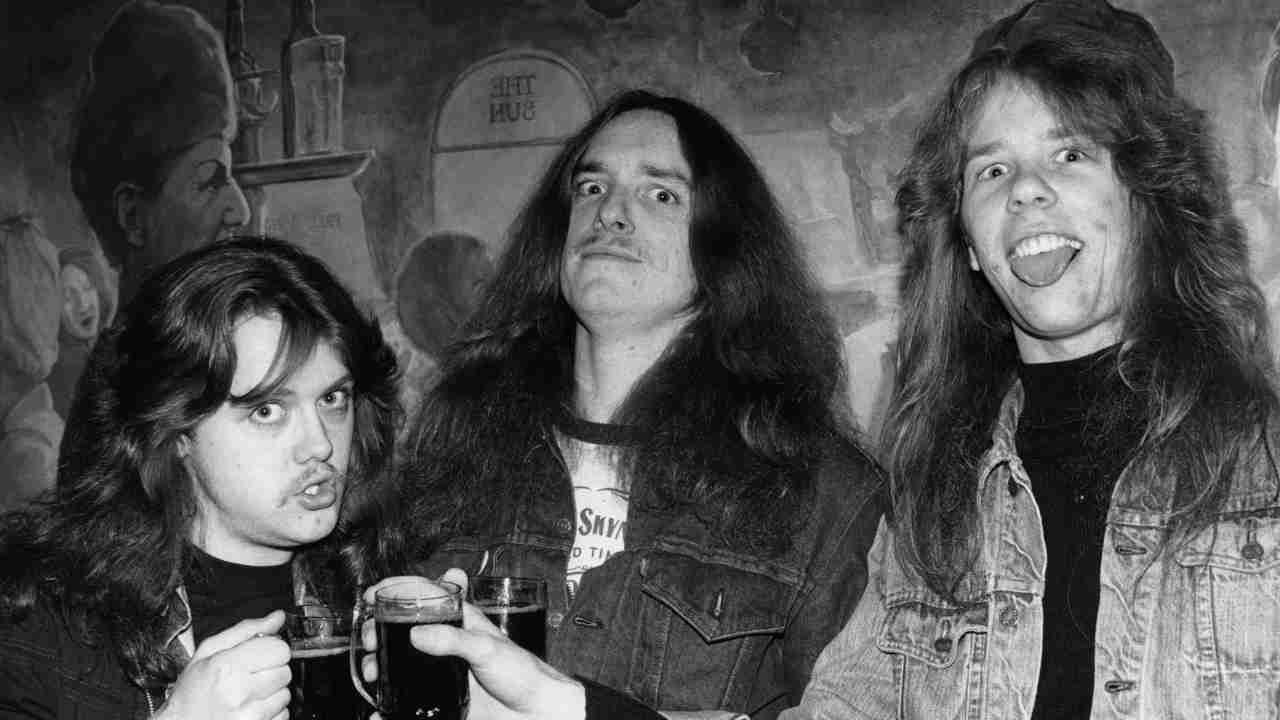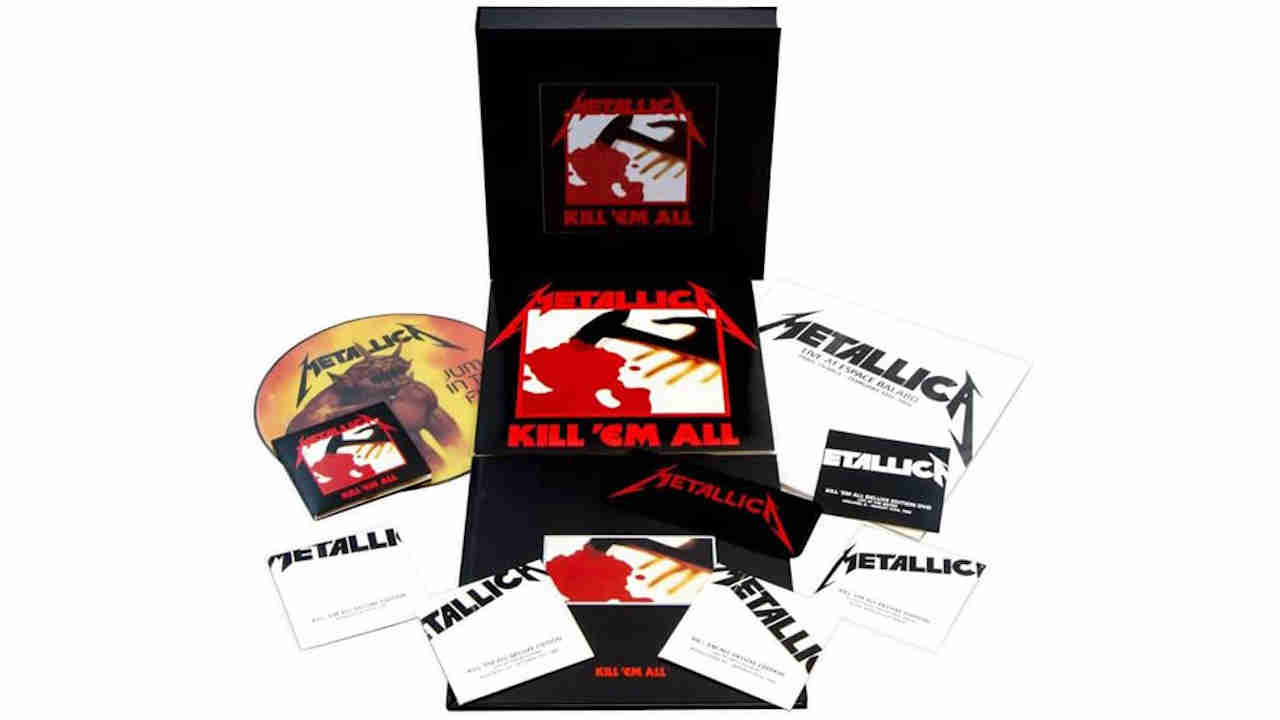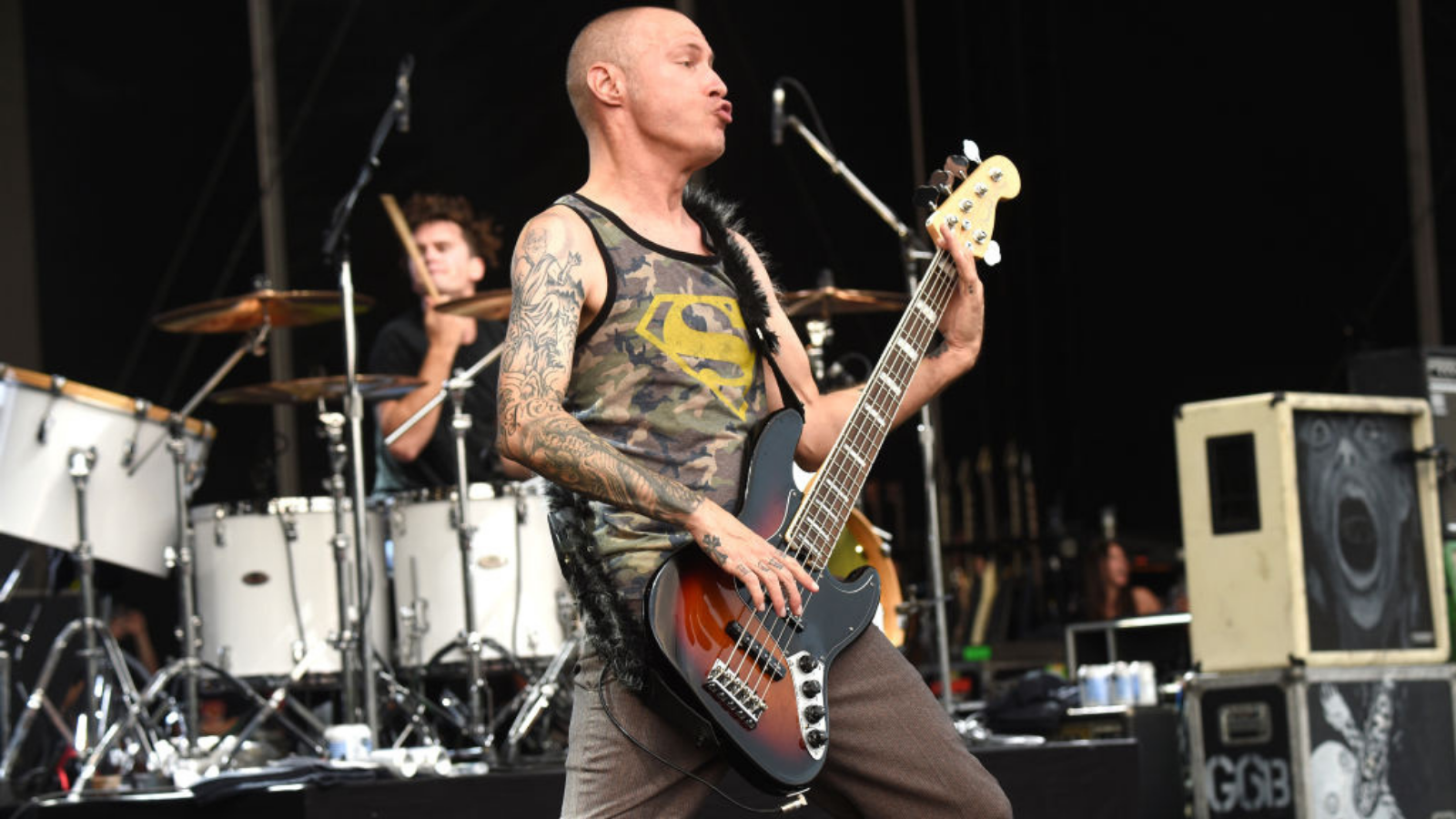Metallica: the story of Kill ’Em All and the birth of the legend
In 1983, four alcohol fuelled kids calling themselves Metallica recorded their debut album Kill ’Em All. No one knew it would change the world

Metallica didn’t exactly make an auspicious arrival. Danish émigré Lars Ulrich – a devotee of the New Wave Of British Heavy Metal – took out an advert in South California newspaper The Recycler at the end of 1980, looking for likeminded metalheads to start a band influenced by Iron Maiden, Diamond Head and the Tygers Of Pan Tang. James Hetfield answered the ad and, after a false start, drummer Lars and guitarist/vocalist James forged what was to become a legendary partnership.
After much chopping and changing, the pair were joined by guitarist/vocalist Dave Mustaine and bassist Cliff Burton and, with a buzz on the underground scene, they came to the attention of East Coast entrepreneur John Zazula, aka Johnny Z.
“We sent them $1,500 to come across the country,” recalls John. “They got a one-way rental: a U-Haul van and a truck. Literally, they had two drivers and they slept in the back with all their gear, and they arrived at my front door. It was basically, ‘We’re here. What do we do next?’.”
This was April 1983. By the end of that month, the band had signed to Johnny Z’s fledgling Megaforce label, were sleeping in a rehearsal space called The Music Building, and had made the fateful decision to fire the unpredictable Dave Mustaine, hiring in his place Exodus’s Kirk Hammett. On May 10, the band went to Rochester, New York, to work with producer Paul Curcio at the Music America Studios on what was to be their debut album.
“The actual studio was in the basement of this huge old colonial-type of clubhouse,” recalls Lars. “On the second floor there was a huge ballroom; perfect for getting a good drum sound. The problem was the place was fucking haunted – I had to have someone else up there the whole time I was recording. My cymbals would start spinning for no reason, shit like that. It was scary.”
While Lars dealt with possible ghosts, James and Kirk were busy getting the sort of guitar sound that would help Metallica stand apart from the growing young thrash crowd.
“All the guitar stuff was recorded through James’s magical, mythical Marshall,” explains Kirk. “It was his first Marshall amp. I think he had it modifiied and it just had a really, really great sound. And I say ‘magical, mythical Marshall’ because it’s not around anymore. Shortly after we did Kill ’Em All we were going to play some shows up in Boston, and someone broke into the truck and stole that Marshall.”
Sign up below to get the latest from Metal Hammer, plus exclusive special offers, direct to your inbox!

Guitar-wise, neither musician was exactly blessed with an abundance of models from which to choose. In fact, each had just one guitar available. In James’s case this was a white Flying V, while Kirk wielded a black Gibson Flying V. But they did the trick.
“When we were tracking, so much time was spent tuning those guitars because we didn’t have any back-up guitars or anything else,” explains Kirk. “We didn’t have any techs or roadies in the studio, so we pretty much had to change strings ourselves, tune it up ourselves. Which was fine for us because that’s what we were used to at that point. We didn’t have techs around us 24 hours a day like it seems we do now when we’re in the studio.”
But while Metallica dedicated themselves to ensuring that they could do the best possible job on the album, the wild youth within each of them occasionally reared its head. Now, when they first arrived in New York, the band stayed at the Zazulas’ impressive mansion. All of this changed when they broke into the family liquor cabinet and drank all the champagne – bottles that had been saved from Johnny’s wedding to Marsha at a later date.
“They’d been saving it forever,” explained a distinctly unrepentant James a couple of years later. “We popped the tops and drank it. That was it.”
Now at Music America, they got back into their old habits – only even more so!
“We totally thrashed the place,” admits Kirk. “I felt bad after a while. I don’t want to get into it too much, but we pretty much never washed the dishes. It’s four guys, you know? There was carpet in every single room including the kitchen and the bathrooms, and we drank pretty much 24 hours a day back then. So you can imagine how that turned out. Moist places shouldn’t have rugs, but there were rugs, and people drinking a lot. It was a mess. But anyway, there was a loft above, on the second floor of the studio, and occasionally we put guitar amps in there for ambience, and I remember Cliff being in that room with all his amps, with headphones on, while he recorded (Anesthesia) Pulling Teeth, his bass solo. He literally was just standing in front of his amps.”
This was Cliff’s party piece, an astonishing piece of near-improvisation that immediately put Metallica into a different league from their contemporaries. After all, how many young bands would even consider putting a bass solo on an album? But, for Kirk, there was a certain logic.
“Well, first of all it was a great piece of music,” he explains. “It was a stand-out piece. Cliff was just so out there, and he was such an original thinker that we just thought, ‘Wow, what a cool idea!’. You know, instead of a guitar solo, like Eddie Van Halen’s Eruption, we had this fantastic bass solo that Cliff wrote, why not put it on the album? It started off being a part of the live show. He’d play it live to give everyone else a break, and then the drums would come in and he’d kind of solo against the drums.”
There was one especially controversial song on the record: The Four Horsemen. This had started out as The Mechanix, written by Dave Mustaine and included on the seminal No Life ’Til Leather demo. When Dave was fired, the band completely re-wrote the lyrics, turning it from a song with overt sexual innuendos into a more Apocalyptic vision.
Money, as one can imagine, was very tight at the time, and the studio budget only gave them from May 10-27 to record and mix everything.
But in the usual scheme of things, the schedule proved to be almost too tight, as Kirk recalls: “We would work from 11 in the morning until 12 or so at night. And then we would pretty much start drinking afterwards. And I remember I took about a week to do all my guitar solos. But I mean that’s not like the entire day of doing guitar solos. That was like five or six hours of doing guitar solos, and then we’d go to something else.
“But when everything was recorded, the engineer [Chris Bubacz] and producer decided that they wanted to mix the album themselves, and pretty much locked us out of the studio while they were mixing it, and added all these weird delays and reverb and all these things that we wouldn’t have done. That’s why there’s such a drastic sonic difference between Kill ’Em All and Ride the Lightning. There’s a lot of things on Kill ’Em All that we just wouldn’t have done. And there are also things that we had recorded which we’d have liked to have maybe fixed or re-recorded, but couldn’t because of the time allowance. We were just running out of time.”
- The 10 best thrash metal albums: a buyers guide
- What happened when the Big Four played together for the very first time
But if there was a race to get the album finished, there was about to be another battle. Over the actual title. The band had always wanted to call it Metal Up Your Ass, which was the title of a live tape recorded in 1982 at the Old Waldorf in San Francisco. They even had a cover mocked up – a hand holding a machete coming through a toilet bowl.
But when word came back that the record distributors were refusing to handle such a sleeve, the band had to rethink their cunning plan. It was Cliff who came up with the alternative title, as James acknowledged in 1986: “Cliff said, ‘Those record company fuckers. Kill ’em all!’.”
The title stuck, along with the new cover, featuring a sledgehammer lying in a pool of blood – perhaps less graphic than the original idea, but just as gory. “I really like the cover,” said Lars, back in 1984. “The idea of a sledgehammer lying in a pool of blood may sound kinda simple, but it looks real neat.”
The album was released in July 1983 with Music For Nations picking it up for the UK and Europe. There are reports that only 1,500 copies were initially pressed up, but Kirk for one reckons this wasn’t the case, and that about 15,000 copies were made available. On this first release, the album made it to number 120 on the US charts, and over the past 25 years it has gone on to sell over three million copies in America, and more than 100,000 in the UK. Most importantly, this was the album that truly ignited the thrash fire, and in doing so it remains a landmark.
“When it came out, it was the achievement of our lives,” concludes Kirk. “You know, our first album. It was finally on vinyl. We could hold it and show people the album and go, ‘Hey, look, we made an album. We’re on vinyl’.
“We knew that Metallica as a band were like no other band out there. And we were just feeling very, very anxious to go into the studio and record these batch of songs, and have them just etched in vinyl, you know, for the rest of our lives, and memorialized onto vinyl. And we knew we were onto something different, but me personally, I did not think that we would hit the heights that we were going to hit. But we were on a mission – and that was world domination.”
Kill ’Em All was the crucial first blow in that quest.
Published in Metal Hammer #179.


Metallica: Kill’ Em All Deluxe Box set
Originally released in 1983, Metallica’s iconic debut album Kill ’Em All ushered in the thrash era with songs such as Whiplash, The Four Horsemen and Jump In The Fire. This limited edition Deluxe Box set features four vinyl records, five CDs, one DVD, a hardcover book including rare photos and a patch.
Malcolm Dome had an illustrious and celebrated career which stretched back to working for Record Mirror magazine in the late 70s and Metal Fury in the early 80s before joining Kerrang! at its launch in 1981. His first book, Encyclopedia Metallica, published in 1981, may have been the inspiration for the name of a certain band formed that same year. Dome is also credited with inventing the term "thrash metal" while writing about the Anthrax song Metal Thrashing Mad in 1984. With the launch of Classic Rock magazine in 1998 he became involved with that title, sister magazine Metal Hammer, and was a contributor to Prog magazine since its inception in 2009. He died in 2021.

